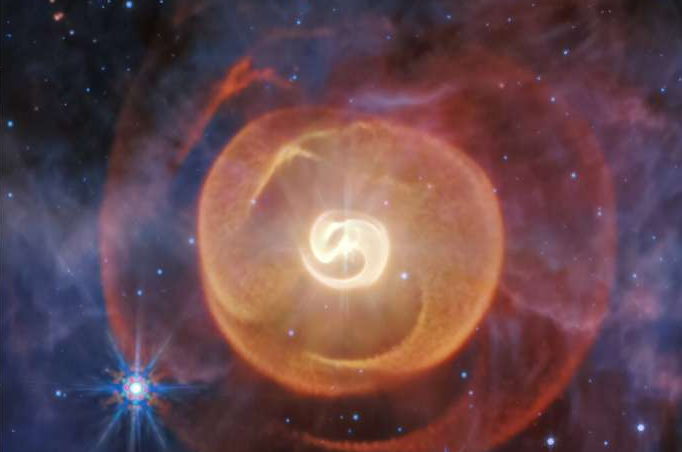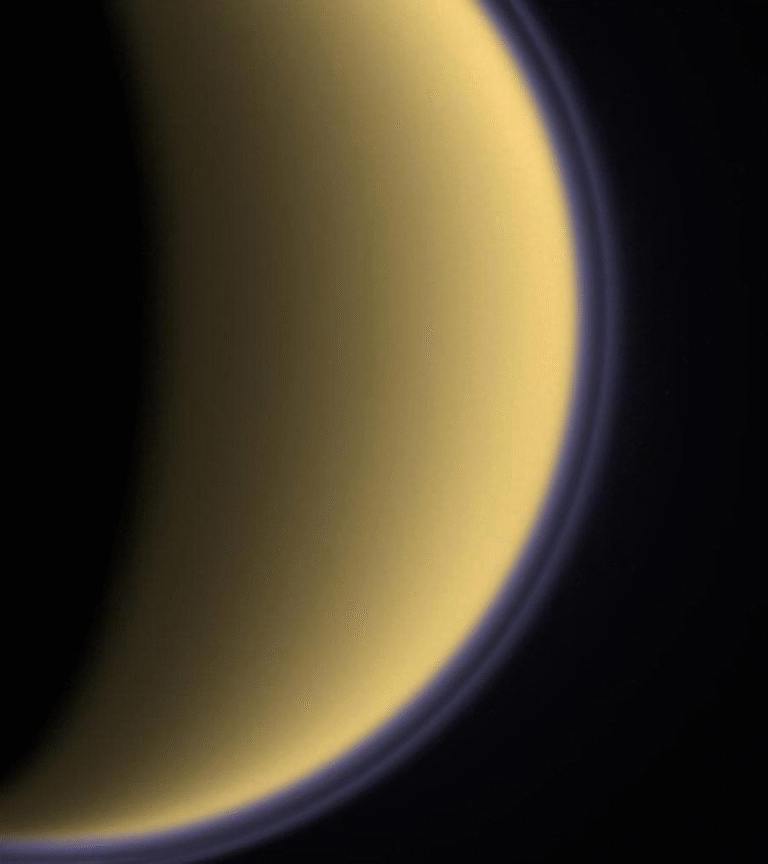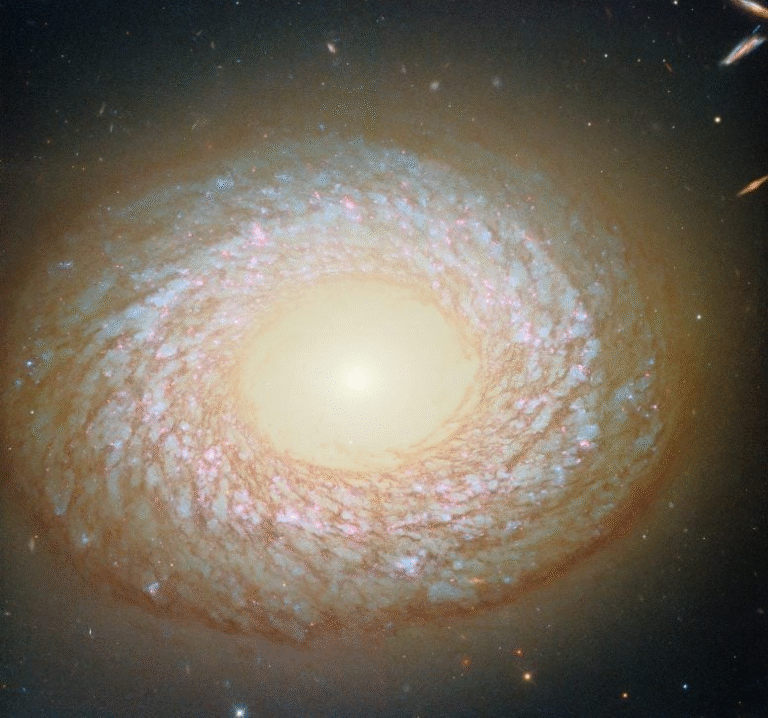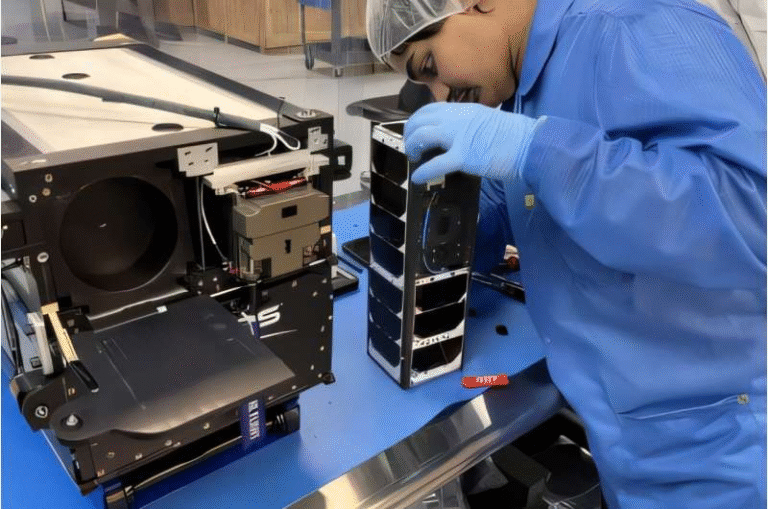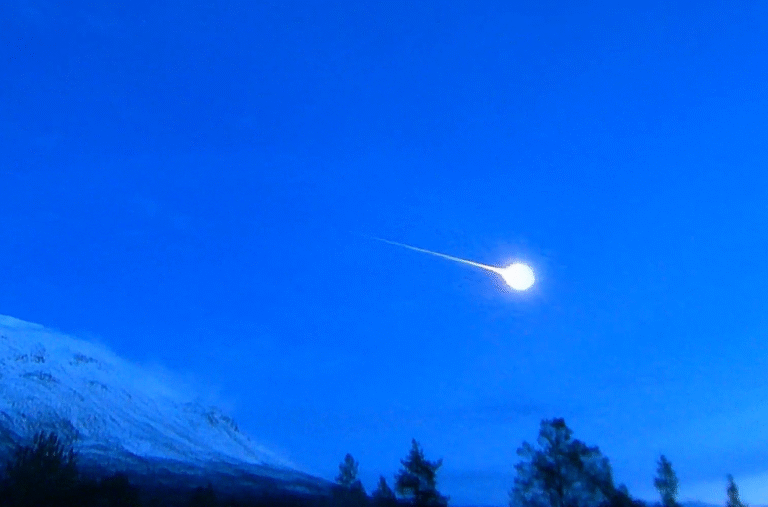Hera and Europa Clipper Might Cross the Tail of Interstellar Comet 3I/ATLAS

In a fascinating twist of cosmic timing, two spacecraft—NASA’s Europa Clipper and ESA’s Hera—are expected to pass through or near the ion tail of an interstellar comet named 3I/ATLAS in the coming days. This could become the first-ever direct sampling of a comet that originated outside our Solar System, marking an extraordinary chance discovery for planetary scientists.
What Exactly Is 3I/ATLAS?
3I/ATLAS, officially known as C/2025 N1 (ATLAS), is the third interstellar object ever detected, following 1I/‘Oumuamua (2017) and 2I/Borisov (2019). It was discovered in early July 2025 by the Asteroid Terrestrial-impact Last Alert System (ATLAS) survey. Its hyperbolic orbit confirmed that it wasn’t born in our Solar System—it’s literally a visitor from another star system.
As it traveled inward toward the Sun, astronomers quickly noticed that 3I/ATLAS was becoming increasingly active, developing a large coma (the gaseous cloud around the nucleus) and a long, bright tail. The comet’s perihelion, or closest approach to the Sun, will occur on October 29, 2025, at a distance of about 1.36 astronomical units (just beyond Earth’s orbit).
Interestingly, 3I/ATLAS follows a retrograde orbit, meaning it moves opposite to the planets’ direction around the Sun. Even so, its orbital path lies close to the ecliptic plane—the flat plane of the Solar System where most planets orbit. This unusual alignment has created a rare opportunity for two unrelated missions to cross paths with material from the comet’s ion tail.
The Lucky Alignment: Two Spacecraft, One Interstellar Tail
The new research paper by Samuel R. Grant and Geraint H. Jones (from the Finnish Meteorological Institute and European Space Agency) outlines this remarkable coincidence. Both Hera and Europa Clipper are currently en route to their respective destinations—Hera to the Didymos–Dimorphos asteroid system and Europa Clipper to Jupiter’s moon Europa—but their trajectories will take them “downwind” of 3I/ATLAS between late October and early November.
- Hera’s encounter window: October 25–November 1, 2025
- Europa Clipper’s encounter window: October 30–November 6, 2025
The researchers used a specialized simulation called Tailcatcher, which predicts the location and shape of a comet’s ion tail based on solar wind speed and direction. The model estimated that:
- Hera will pass about 8.2 million kilometers from the central axis of the tail.
- Europa Clipper will come within 8.0 million kilometers.
That may sound like a huge distance, but ion tails from active comets can extend for tens of millions of kilometers, meaning both spacecraft could still pass through a detectable region of charged particles.
How a Comet’s Ion Tail Works
A comet’s tail is not a single structure—it’s usually two separate tails: a dust tail and an ion (plasma) tail.
- The dust tail is made of small solid particles blown away from the comet’s nucleus by sunlight pressure.
- The ion tail is made of charged gas particles that interact with the solar wind—a stream of charged particles constantly flowing outward from the Sun.
Because these ionized gases are shaped by solar magnetic fields, the ion tail doesn’t point directly away from the comet’s motion but rather follows a curved path away from the Sun. The paper notes that accurately predicting where spacecraft will encounter this tail depends heavily on solar wind conditions, which vary and are only known after the fact.
This means that while scientists can predict when Hera and Europa Clipper will pass nearby, they won’t know for sure whether the spacecraft will actually cross through the densest region of the ion tail until the event is over.
Can the Spacecraft Actually Detect Anything?
That’s where the missions differ.
- ESA’s Hera spacecraft isn’t equipped with plasma or magnetic field sensors capable of measuring cometary ions or magnetic “draping structures.” Its focus is asteroid composition and dynamics, not plasma science.
- NASA’s Europa Clipper, however, does have the right tools. It carries both a plasma instrument and a magnetometer—precisely the instruments needed to detect ions and magnetic field changes as it passes near the tail.
If mission controllers decide to collect and analyze the data during the encounter window, Europa Clipper could become the first spacecraft to directly sample an interstellar comet’s tail.
The timing, though, is tight. With both spacecraft already deep into their mission schedules, coordinating such an observation on short notice would be a logistical challenge. The study was only published recently, and mission teams may not have enough time to plan additional maneuvers or data collection sequences.
Why This Matters
The chance to study an interstellar comet’s tail up close is rare and scientifically valuable. Until recently, interstellar visitors were only studied with Earth-based telescopes. 1I/‘Oumuamua, for instance, passed by too quickly for any spacecraft to intercept, and 2I/Borisov, while active, was too distant for in-situ sampling.
If Europa Clipper does capture data, scientists could gain unprecedented insights into:
- The composition of interstellar material and how it differs from Solar System comets.
- How magnetic draping occurs in plasma environments around foreign bodies.
- The general physics of ion tail formation under different stellar conditions.
Such measurements would help us understand how materials from other star systems interact with our Sun’s solar wind—an essential piece in the broader puzzle of planetary system evolution.
What We Know So Far About 3I/ATLAS
Observations since June show that 3I/ATLAS has been “gushing” water and other volatiles, forming a rapidly expanding coma and tail. As of now, it has moved out of view of Earth-based telescopes, though astronomers expect it to continue brightening as it nears perihelion on October 29.
Recent polarimetric studies—which analyze light polarization from scattered dust—show that 3I/ATLAS has unusual optical properties, different from most known comets. It exhibits a deep negative polarization branch (about –2.7% at 7° phase angle) and a relatively small inversion angle (around 17°). These characteristics hint at different surface or dust-grain structures, possibly reflecting its extrastellar origin.
The comet’s dust production rate follows a heliocentric power law with an exponent near 3.8, consistent with activity driven by carbon dioxide (CO₂) rather than water ice alone—again, a hint that its composition differs from most comets formed in our Solar System.
How Scientists Will Track the Event
Researchers will monitor data from Hera and Europa Clipper over the next two weeks. If the spacecraft do pass through detectable portions of the ion tail, they could record:
- Variations in ion density.
- Magnetic field distortions caused by the tail’s plasma interaction.
- Potential charged particle signatures distinct from background solar wind conditions.
In addition, telescopes and Mars-orbiting observatories (like MAVEN) are expected to continue imaging the comet’s tail evolution to compare with in-situ spacecraft data.
Even if the spacecraft don’t detect anything conclusive, the modeling work will help refine how we predict tail geometry for future encounters—possibly aiding in rapid-response planning for the next interstellar visitor.
A Quick Look at Interstellar Objects
The first known interstellar object, ‘Oumuamua, was discovered in 2017. It appeared as a fast, tumbling rock with no visible tail, sparking endless debates about its nature (including alien theories). The second, 2I/Borisov, looked more like a traditional comet, with a nucleus and a distinct tail, confirming that other planetary systems can eject icy bodies into interstellar space.
3I/ATLAS continues this trend—but with even more data. Its brightness, chemical activity, and proximity during perihelion make it one of the most observable interstellar objects to date. If spacecraft data confirm interaction with its ion tail, it would be the first time humanity has physically sampled material originating from another star system.
Looking Ahead
Within the next few weeks, scientists will know whether Europa Clipper or Hera captured anything from this encounter. Either way, this event highlights the value of serendipity in science—sometimes, the universe aligns just right, and existing missions get an unexpected bonus experiment.
The paper notes that acting on such opportunities is never easy, but when it works, it can deliver once-in-a-lifetime discoveries. Even if the spacecraft miss the densest parts of the tail, the mere attempt reflects how adaptable and opportunistic modern space exploration has become.
For now, we’ll be watching closely as 3I/ATLAS streaks through the inner Solar System, leaving behind a tail of ions, dust, and cosmic mystery—possibly to be sampled for the very first time.
Research Reference:
Prospects for the Crossing of Comet 3I/ATLAS’s Ion Tail (arXiv:2510.13222)
